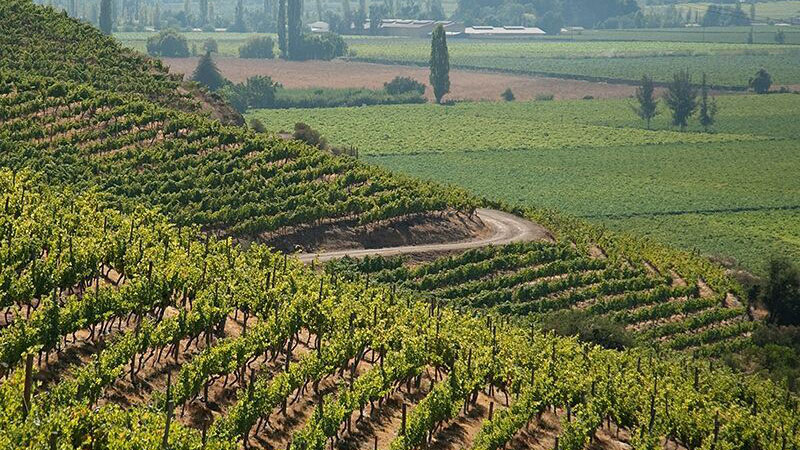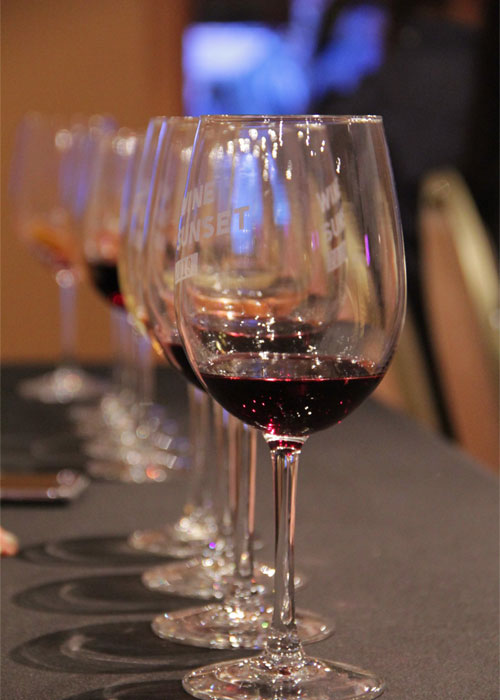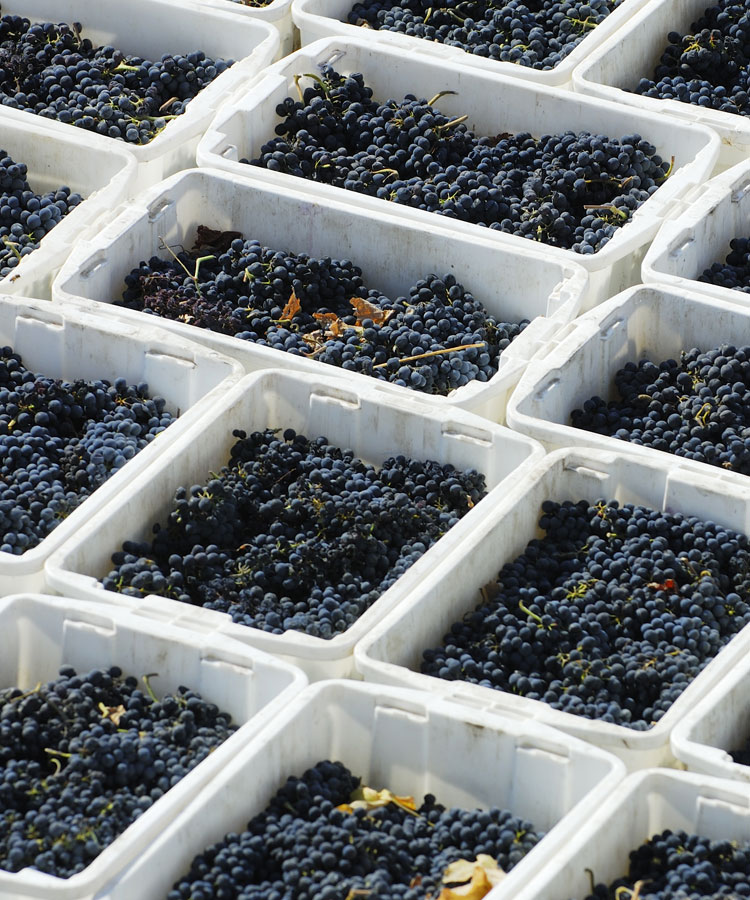
Chile runs along South America’s western edge from the dry desert in the north to a field of glaciers in the south. Rugged mountains, fertile valleys, never-ending coastline, rumbling volcanoes and scorched sand dunes all clash to provide this long, thin country with a captivating landscape. For winemakers, that landscape is more than captivating, it is a grape grower’s paradise.
The low cost of land, rare interference from vine pests and diseases, dependable dry, warm summers, and nearby mountains providing a regular supply of fresh runoff water to irrigate the vines make Chile a winemaker’s dream.
In addition to the melting pot of ideal grape-growing conditions, Chile’s location isolates its vineyards from devastating vine pests. With the Atacama Desert to the north, the Andes Mountains to the east, the Chilean Antarctic to the south, and the Pacific Ocean to the west, Chile is geologically sheltered. This was especially helpful in the mid-1800s when the plant louse phylloxera ravaged grape vines around the world. Starting in France, phylloxera jumped from vineyard to vineyard, wiping out entire swaths and decimating generations of winemaking tradition. Chile was one of the few regions spared.
Despite the perfect location, perfect climate, and perfectly isolated vineyards, winemaking in Chile had a slow start. During the past 30 years, however, wine production and wine quality have increased dramatically, catapulting Chile to the forefront of the wine world. And it’s all thanks to one grape — Cabernet Sauvignon.
The county’s winemaking dates back to the 19th century when wealthy Chileans traveling through Europe were introduced to wine. Like most New World countries, Chile’s original plantings came from France with a heavy influence from the Bordeaux region.
“In the 19th century, Chileans decided to replant the Central Valley with Bordeaux grapes. At that time Cabernet Sauvignon was brought from France along with the Carménère, Merlot, and Malbec. They immediately recognize that the terroir was perfect for these grapes. Cabernet Sauvignon was a success story from the very beginning,” said Jonathan Charnay, sommelier and beverage director at the 3-Michelin-star Masa Restaurant. Charnay grew up in Chile before moving to New York in his teens.

Wine production in Chile began taking off starting in 1850, but political instability, high taxes, and bureaucratic regulation hampered wine production and quality for more than 100 years.
In the early 1980s, Spanish manufacturer Miguel Torres began transforming wine production with the introduction of stainless-steel tanks and French oak barrels. Winemakers took notice. Investors poured money into technology, viticulture, and winemaking. Estates like Montes and Miguel Torres Winery were leading Chile into a new area of quality winemaking.
When the political climate stabilized in the 1990s Chile’s winemaking began to take a more serious role. Recognizing the importance of the wine industry to the country’s economy, government officials established the DO (Denominacion de Origen) system to designate specific viticultural regions throughout Chile.
The groundwork established in the ‘80s and ‘90s has paid off. Chile now ranks as high as fifth in the world’s wine exportation. Wine quality across the board has risen, but where Chile really shines is with its Cabernet Sauvignon.
Cabernet Sauvignon — one of Bordeaux’s five official red grapes — was created during an accidental breeding of red Cabernet Franc and white Sauvignon Blanc in the 17th century. That accidental breeding produced one of the world’s most popular wine grapes.
While Carménère might be Chile’s signature grape, Cabernet Sauvignon is the most planted and most popular varietal. The durable, easy-to-grow grape is known for its thick skin, hardy vines, juicy, dark fruit flavors, moderate tannins, and silky texture.
“Chile has the ideal climatic and soil conditions for a great Cabernet Sauvignon production,” said Carlos Serrano, commercial director of Montes Winery. “With the correct viticulture and irrigation the concentration level and softness of tannins can be magical.”
Chile is now at the forefront of producing world-class Cabernet Sauvignon and Bordeaux blends in a style all their own.
“Compared to Bordeaux, Chilean Cabernets have fuller body and softer tannins, which makes them more approachable in their youth. There are also spicier notes on the palate, making Chilean Cabernet more exotic,” Charnay said.

Chilean Cabernets vary greatly depending on the region they are from. The Colchagua Valley in central Chile and Maipo farther north are considered the country’s key Cabernet regions. Wines from the Maipo Valley show great complexity, intense black fruit flavors, spicy undertones, and bright acidity, Charnay said. In Colchagua they tend to be denser and fuller-bodied with firm tannic structure and great potential for aging.
“A new generation of winemakers are intent to show the uniqueness of the terroir and are producing some excellent wines at an incredible value to the consumer,” said sommelier Rae Wilson. Wilson owns Wine For the People, a wine education company that serves both consumers and trade professionals looking to learn more about wine.
“I am a fan of Casa Silva Los Ligues Cabernet Sauvignon from a higher elevation in the Colchagua Valley. This one shows a bit richer on the palate with broader tannic framework,” she said.
Both Charnay and Serrano are excited about the future of Chilean Cabernet. Chile is still a new player in the wine world, which means winemakers have more to discover. Serrano predicts that winemakers will continue to innovate by creating new styles of Cabernet Sauvignon. In a country as big and as regionally diverse as Chile, the options for innovative winemaking are endless.
“The biggest asset of Chile as a wine country is its diversity of microclimates; they produce a whole universe of delicious wines waiting to be discovered,” Charnay said.
This article is sponsored by Wines of Chile. Taste the Unexpected.
This story is a part of VP Pro, our free platform and newsletter for drinks industry professionals, covering wine, beer, liquor, and beyond. Sign up for VP Pro now!
